AGM batteries, also known as Absorbed Glass Mat batteries, are a type of rechargeable battery that is commonly used in vehicles, power backup systems, and other applications. These batteries have become popular due to their high energy density, low self-discharge rate, and long life span.
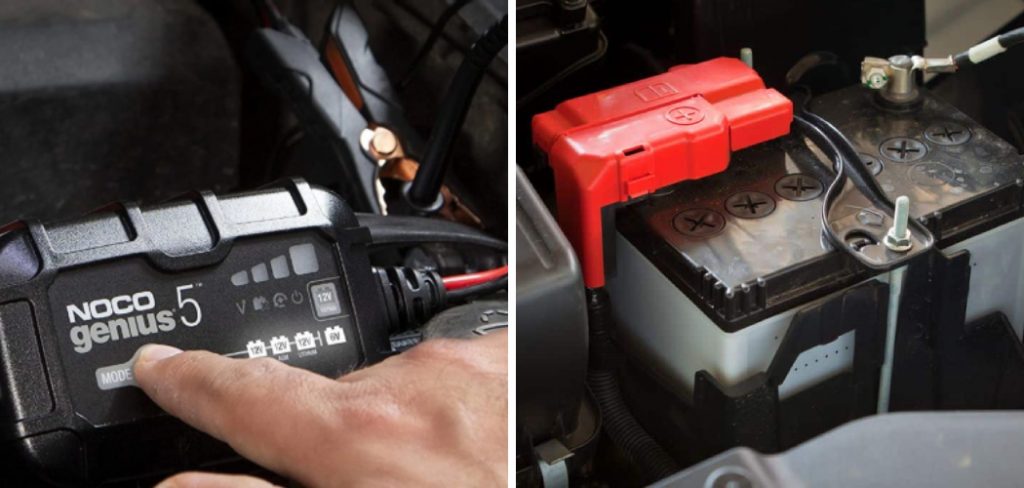
However, like most types of batteries, AGM batteries can suffer from sulfation, which is the buildup of lead sulfate crystals on their plates. This can result in reduced battery capacity and performance, as well as a shortened lifespan. In this guide, we will discuss how to desulfate AGM battery restore them to their optimal functioning state, and prolong their lifespan. So, let’s get started!
Understanding Sulfation in AGM Batteries
Sulfation is a natural process that occurs when lead-acid batteries are discharged and charged repeatedly. During the discharge cycle, sulfuric acid in the battery reacts with the lead plates, forming lead sulfate crystals.
When the battery is recharged, these crystals should be converted back into sulfuric acid and lead plates. However, if the charging process is interrupted or inconsistent, the crystals may not fully convert, leading to a buildup of sulfation on the plates. This can also occur if the battery is left discharged for extended periods.
Sulfation can significantly impact the performance and lifespan of AGM batteries. It reduces their capacity and ability to hold a charge, making them less efficient in powering devices or starting vehicles. If left untreated, it can also cause irreversible damage to the battery, rendering it useless. That’s why it is crucial to desulfate AGM batteries regularly.
11 Best Ways on How to Desulfate Agm Battery
1. Use a Desulfating Charger:
The most efficient way to desulfate an AGM battery is by using a desulfating charger. These chargers have special circuits and modes that can break down the lead sulfate crystals and restore the battery’s performance. Simply connect the charger to your battery and let it do its job. Using a desulfation charger is the easiest and most effective method, but it can be expensive.
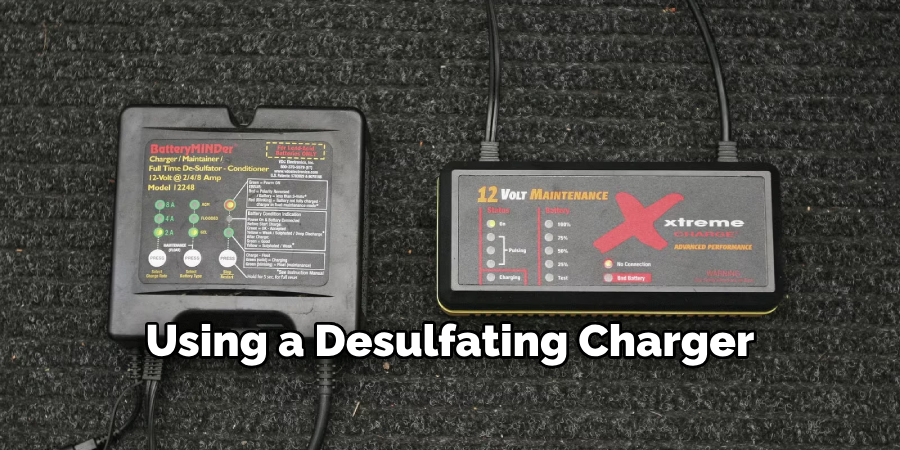
2. Charge at a High Voltage:
If you don’t have access to a desulfating charger, you can try charging your battery at a higher voltage than normal. This will help break down the lead sulfate crystals and convert them back into sulfuric acid and lead plates. However, be cautious when doing this as charging at too high of a voltage can damage the battery. This method may also take longer to fully desulfate the battery compared to using a desulfating charger.
3. Use an External Desulfator:
An external desulfator is a device that can be connected to your AGM battery and help break down sulfation. These devices use high-frequency pulses of electricity to disrupt the lead sulfate crystals, allowing them to be converted back into sulfuric acid and lead plates. They are relatively inexpensive, but they may not work as effectively as a desulfation charger.
4. Add Epsom Salt Solution:
Epsom salt, also known as magnesium sulfate, can help remove sulfation from AGM batteries. Mix one tablespoon of Epsom salt with warm distilled water and add it to each cell of the battery. Let the solution sit for a few hours before recharging the battery. The Epsom salt will react with the lead sulfate crystals, breaking them down and restoring the battery’s performance.
5. Use a Battery Additive:
There are also commercial desulfating additives available in the market that claim to restore AGM batteries. These additives are added directly to the battery and work by dissolving the lead sulfate crystals. However, their effectiveness can vary, and they may not be suitable for all types of AGM batteries. Using a desulfating charger or external desulfator may be more effective.
6. Perform Equalization Charging:
Equalization charging is a process where you charge the battery at a high voltage for an extended period to break down sulfation. It is recommended to do this once every few months, especially if your AGM battery is regularly used in deep-cycle applications. However, be cautious when performing this method as overcharging can damage the battery.
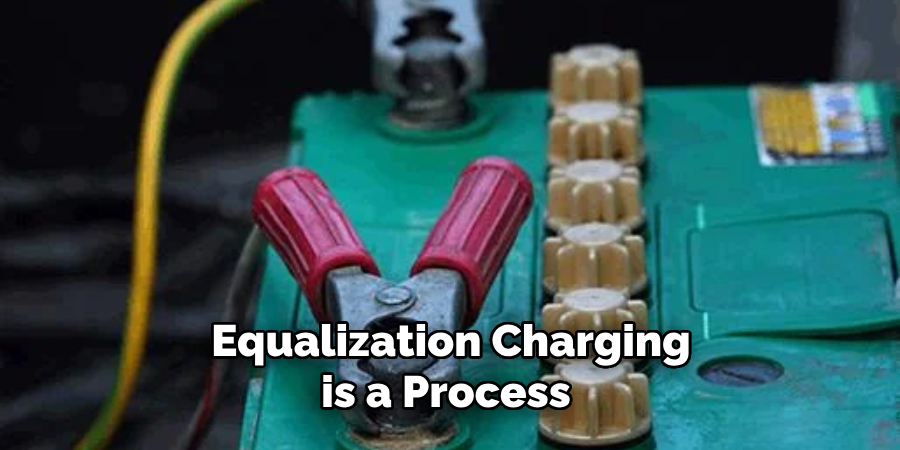
7. Use a Pulsed Charger:
Pulsed chargers are similar to desulfating chargers, but they use short pulses of electricity instead of a constant charge. These pulses help break down lead sulfate crystals and restore the battery’s performance. They are not as effective as desulfating chargers, but they can still improve the battery’s lifespan and performance. Using a pulsing charger can also help prevent sulfation from occurring in the future.
8. Add Distilled Water:
If your AGM battery is low on water, it may be more prone to sulfation. Check the water levels regularly and add distilled water if needed. This will ensure that the battery has enough electrolyte solution to convert the lead sulfate crystals back into sulfuric acid and lead plates during the charging process. Adding distilled water can also prevent the battery from drying out and becoming damaged.
9. Use a Battery Desulfator Plate:
A battery desulfator plate is a device that can be attached to your AGM battery to help break down sulfation. These plates use high-frequency vibrations to loosen the lead sulfate crystals, allowing them to be converted back into sulfuric acid and lead plates. They are relatively inexpensive and can be used multiple times, making them a cost-effective solution for desulfating AGM batteries.
10. Perform Manual Discharge:
If your AGM battery is severely sulfated, you may need to perform a manual discharge to break down the crystals. This involves using a high-powered resistor or light bulb connected to the battery to slowly drain the charge. Once the battery is fully discharged, recharge it using a desulfating charger or other methods mentioned above to restore its performance.
11. Prevent Sulfation from Occurring:
As they say, prevention is better than cure. The best way to deal with sulfation in AGM batteries is by preventing it from happening in the first place. Regularly maintaining and charging your battery, using it for its intended purpose, and avoiding overcharging can help prevent sulfation from occurring. This will not only save you the hassle of desulfation but also extend the lifespan and performance of your AGM battery.
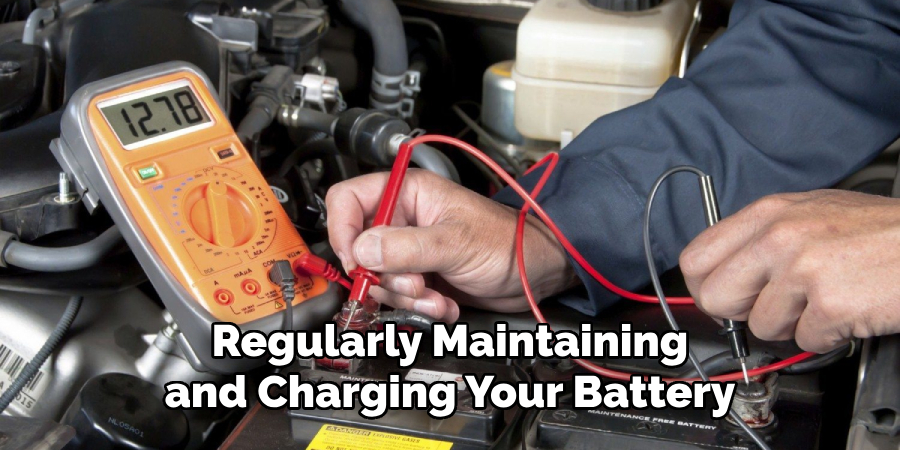
Following these methods, you can effectively desulfate your AGM battery and restore its performance. It is important to regularly maintain and care for your battery to prevent sulfation from occurring in the future. With proper maintenance, your AGM battery can last for many years to come. So, make sure to follow these tips and tricks to keep your AGM battery running smoothly. Happy desulfating!
Additional Tips and Tricks to Desulfate Agm Battery
- If the battery needs to be recharged, use a battery charger with an automatic desulfation mode. This will help break down any existing sulfation and prevent further buildup.
- If the battery is not in use for an extended period, consider using a battery maintainer to keep it charged and prevent sulfation.
- Avoid overcharging the battery as this can also lead to sulfation. Make sure to follow the manufacturer’s instructions for charging times and voltage levels.
- Clean the terminals of the battery regularly with a mixture of baking soda and water to remove any corrosion. This will help improve the overall performance of the battery.
- Check the electrolyte levels regularly and top up with distilled water if necessary. Low electrolyte levels can also contribute to sulfation.
- Store the battery in a cool and dry place, away from direct sunlight or extreme temperatures. High temperatures can accelerate the sulfation process.
- Use a battery load tester to check the overall health of the battery and identify any potential issues before they become major problems.
- When replacing an old battery, make sure to properly dispose of it according to local regulations. Most automotive stores or recycling centers will accept used batteries for recycling.
- Consider using a desulfator device specifically designed for AGM batteries. These devices use high-frequency pulses to break down sulfation and restore battery performance.
- Finally, proper maintenance and usage of the battery can greatly extend its lifespan and prevent the need for frequent desulfation. So make sure to follow all manufacturer’s instructions and best practices.
Following these additional tips and tricks can help you effectively desulfate an AGM battery and keep it in optimal condition for longer. Remember, prevention is key when it comes to sulfation, so regular maintenance and proper usage are crucial. With the right approach, you can save money on frequent battery replacements and ensure that your AGM battery continues to function efficiently.
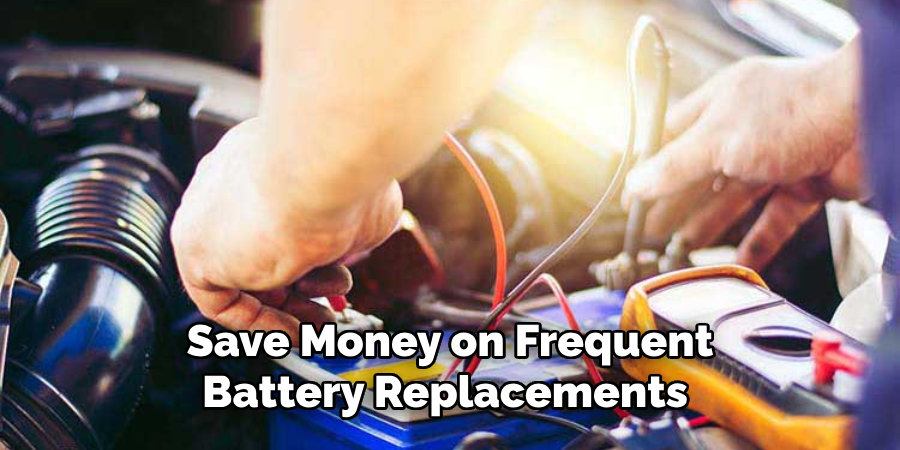
Stay proactive and take care of your battery to maximize its performance and lifespan. So don’t wait until it’s too late, start implementing these tips today and enjoy the benefits of a properly desulfated AGM battery!
Things You Should Consider to Desulfate Agm Battery
1. The first thing you should consider is the state of your AGM battery. If it has been sitting unused for a long period, there is a higher chance that it may have sulfation buildup.
2. It is important to check the voltage of your AGM battery before attempting any desulfation methods. A fully charged AGM battery should have a voltage between 12.6 and 12.8 volts.
3. Before desulfation, make sure to disconnect any loads or devices connected to the battery. This will avoid any potential damage to your equipment during the process.
4. Various methods can be used for desulfating an AGM battery, such as using a desulfator device, using chemical additives, or using a high-voltage pulse. It is important to research and choose the method that best suits your battery and situation.
5. If using a desulfator device, make sure to follow the instructions provided by the manufacturer carefully. Improper use of these devices can cause damage to the battery or even lead to injury.
6. Chemical additives can also be used for desulfation, but it is important to use them with caution and follow the instructions provided by the manufacturer. These additives can be harmful if not used properly.
7. High voltage pulse desulfation is another method that can be effective in removing sulfation from AGM batteries. However, this method should only be performed by experienced individuals as it involves working with high-voltage electricity.

8. It is important to be patient when attempting to desulfate an AGM battery. The process can take several weeks or even months, depending on the level of sulfation buildup.
9. Regular maintenance and proper charging practices can help prevent sulfation buildup in AGM batteries. Make sure to follow the manufacturer’s recommendations for charging and storing your battery.
10. In some cases, if the sulfation buildup is too severe, desulfation may not be effective and it may be necessary to replace the battery. This is why regular maintenance and proper usage of the battery are crucial in prolonging its lifespan.
Following these considerations can help improve the performance and lifespan of your AGM battery. Remember to always prioritize safety and carefully research the method you choose for desulfation. Proper maintenance and usage will go a long way in keeping your battery in good condition.
So, make sure to incorporate these practices into your battery care routine. By doing so, you can ensure that your AGM battery serves you well for a long time. Keep in mind that prevention is key, so regular maintenance and usage habits are important in avoiding sulfation buildup in the first place.
Taking these steps will not only save you time and money but also ensure that your AGM battery continues to function efficiently for all your power needs. Happy desulfating!
Maintenance Tips for Agm Battery
1. Proper Storage:
One of the key factors in prolonging the lifespan of your AGM battery is storing it properly. When not in use, AGM batteries should be stored in a cool and dry place, away from direct sunlight, moisture, and extreme temperatures.
This will prevent the battery from self-discharging and help preserve its charge when you need it. It is also important to keep your AGM battery fully charged before storing it, as a partially charged battery can lead to sulfation and decrease its overall lifespan.
2. Regular Charging:
AGM batteries require regular charging to maintain their performance and prolong their lifespan. Even if you do not use the battery frequently, it is important to charge it at least once a month to prevent sulfation and keep the battery in good condition. It is recommended to use a smart charger specifically designed for AGM batteries, as it will ensure that the battery does not overcharge or undercharge.
3. Avoid Deep Discharging:
Deep discharging refers to draining your AGM battery below 50% of its capacity. This can significantly reduce the lifespan of your battery and cause irreparable damage. To avoid deep discharging, it is important to regularly check the voltage of your battery and recharge it before it reaches a critical level. Using a deep-cycle AGM battery is also recommended for applications that require frequent deep discharges.
4. Proper Installation:
When installing an AGM battery, ensure that it is properly secured and insulated. The battery should be kept away from any metal objects or surfaces that could cause a short circuit. It is also important to follow the correct polarity when connecting the battery to your device or vehicle. Improper installation can lead to damage to both the battery and your equipment.
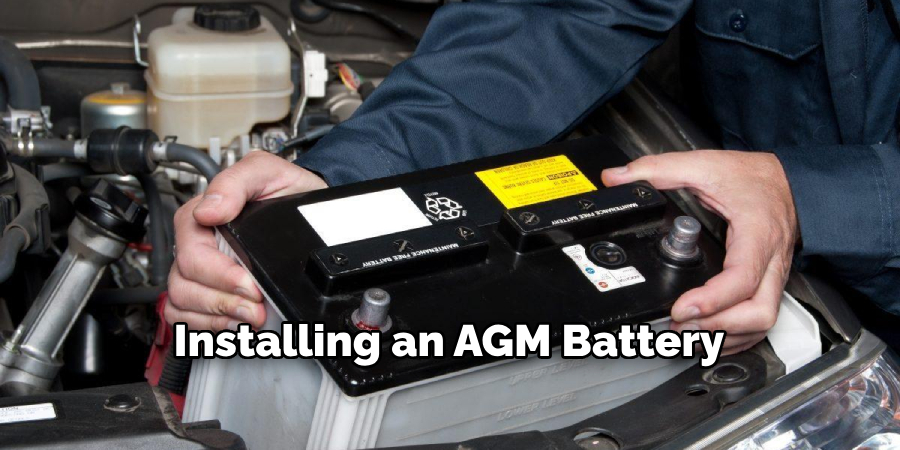
5. Regular Maintenance:
Regular maintenance of your AGM battery is crucial to ensure its performance and longevity. This includes checking the battery’s terminals for any corrosion and cleaning them if necessary.
It is also important to inspect the casing of the battery for any cracks or leaks, as these can lead to acid spills and damage your equipment. Additionally, keeping the top of the battery clean from dirt and debris will prevent any potential issues.
6. Avoid Overloading:
AGM batteries have a limited capacity and are not designed to handle heavy loads for extended periods. It is important to avoid overloading your battery as it can lead to overheating and damage to the internal components. Make sure you know the specifications of your AGM battery and do not exceed its recommended usage.
7. Follow Manufacturer’s Guidelines:
Lastly, it is important to always follow the manufacturer’s guidelines for your specific AGM battery. Each brand and model may have different recommendations for maintenance and usage, so be sure to read the manual carefully. This will ensure that you are taking the necessary steps to properly care for your AGM battery and prolong its lifespan.
Following these maintenance tips will not only extend the lifespan of your AGM battery but also ensure that it performs at its best. Taking proper care of your battery will save you money in the long run and prevent any potential safety hazards.
Make sure to regularly check and maintain your AGM battery to keep it in top condition for all your power needs. So, always consider these tips and follow them to get the most out of your AGM battery. Happy charging!
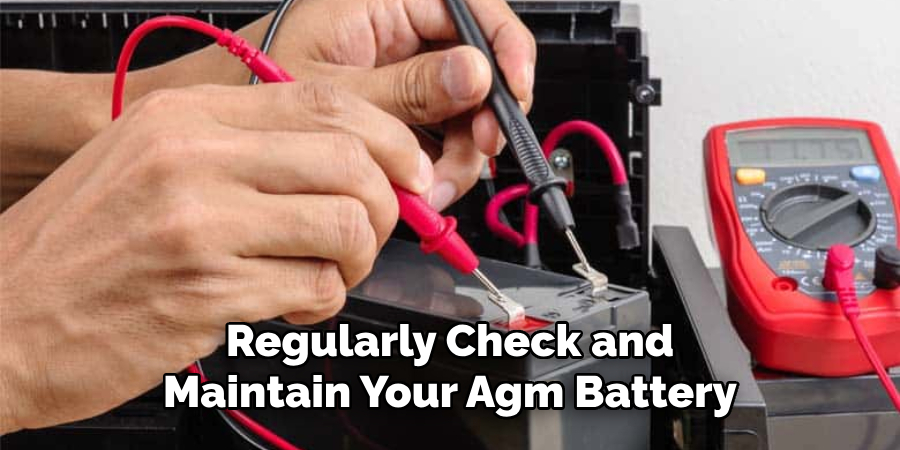
Conclusion
All in all, knowing how to desulfate AGM battery and taking care of your battery can save you money and hassle in the long run. Remember to check your battery regularly for signs of sulfation, proper water levels, and clean terminals.
In addition, make sure to keep your battery charged at all times, especially during colder months when sulfation can occur more quickly. If you do notice signs of sulfation, be sure to take the necessary steps to desulfate your battery as soon as possible. With proper maintenance and care, your AGM battery can last for years to come.

